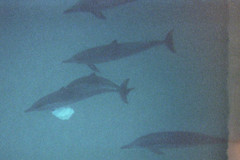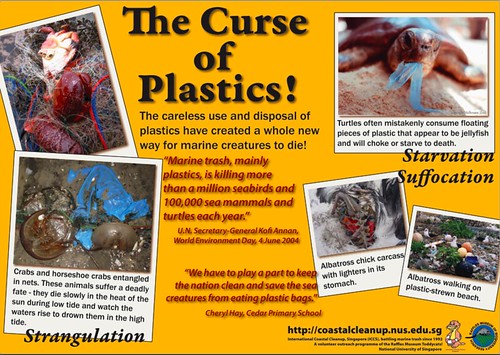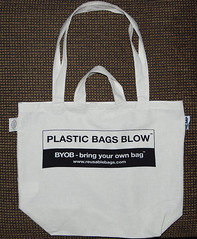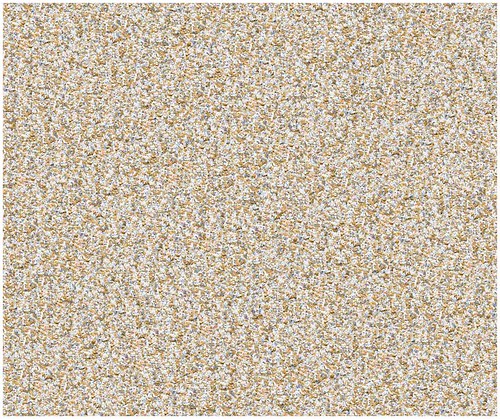11:00AM
Courtesy of the camera and work of Chris Jordan, decaying Albatross chicks are sending a message from the Pacific gyre about the plastic footprint that humanity is leaving across the planet. Chris’ introduction to this searing set of photos:
These photographs of albatross chicks were made just a few weeks ago on Midway Atoll, a tiny stretch of sand and coral near the middle of the North Pacific. The nesting babies are fed bellies-full of plastic by their parents, who soar out over the vast polluted ocean collecting what looks to them like food to bring back to their young. On this diet of human trash, every year tens of thousands of albatross chicks die on Midway from starvation, toxicity, and choking.
To document this phenomenon as faithfully as possible, not a single piece of plastic in any of these photographs was moved, placed, manipulated, arranged, or altered in any way. These images depict the actual stomach contents of baby birds in one of the world’s most remote marine sanctuaries, more than 2000 miles from the nearest continent.
For more, see Midway Journey
The Midway Journey photostream.
Plastics are pervasive and a pervasive problem
“It’s a toilet that never flushes, but just keeps accumulating,” Charles Moore, founder of the Algalita Marine Research Foundation, says of the patch. “If you’re an organism in this area you have six times as much chance of bumping into something plastic as you do something natural.”
On plastics in the ocean, the best  single approachable piece (with excellent, distressing photos) that I’ve see is Susan Casey’s Plastic Ocean: Our oceans are turning into plastic … are we? at
single approachable piece (with excellent, distressing photos) that I’ve see is Susan Casey’s Plastic Ocean: Our oceans are turning into plastic … are we? at
Best Life Online. That article is HIGHLY recommended. (Pale Cold started She’s dead! Wrapped in Plastic with a quote from this.)
And, well, talking of connecting crises, where do those plastics come from? Anyone ready to talk Peak Oil? Petroleum is
pervasive in modern life and one path to ameliorate Peak Oil is to reduce (eliminate) unnecessary use … e.g., plastics that end up polluting the globe.

Taking the smallest of steps: How much might canvas bags help?
From Reusable Bags.COM:
- The amount of plastic going to plastic bags is somewhat staggering to consider.
Each year, an estimated 500 billion to 1 trillion plastic bags are consumed worldwide. That comes out to over one million per minute. Billions end up as litter each year.
According to the EPA, over 380 billion plastic bags, sacks and wraps are consumed in the U.S. each year.
According to The Wall Street Journal, the U.S. goes through 100 billion plastic shopping bags annually. (Estimated cost to retailers is $4 billion)
100 billion of those grocery store and other shopping bags! Just how many layers of wrapping do we need around our purchases?
- And, the impact can be, literally devastating and near permanent.
Hundreds of thousands of sea turtles, whales and other marine mammals die every year from eating discarded plastic bags mistaken for food.
Plastic bags don’t biodegrade, they photodegrade-breaking down into smaller and smaller toxic bits contaminating soil and waterways and entering the food web when animals accidentally ingest.
And, action matters … every canvas bag entered into the process can have an impact by reducing tomorrow’s plastic load.
Each high quality reusable shopping bag you use has the potential to eliminate hundreds, if not thousands, of plastic bags over its lifetime.
Getting in the habit of carrying a canvas bag is a first step toward reducing (if not ending) a love affair with wasteful, polluting plastics.
A first, symbolic step that can have an impact …
Does symbolic have meaning?
Let us be clear, the news is grim when it comes to Global Warming. The Planet is on Hair Trigger for catastrophic climate change, with the potential for events to get out of our (humanity’s) control (if we’re not already there). The imperative for change mounts literally with each passing second.
The symbolic message of carrying a canvas bag to the grocery store in a McSUV to pick up fish flown and grapes shipped halfway around the world to your local grocery will not, in itself, change the globe for the better.
And, there is a good case to be made that emphasizing the small, easy changes can be counterproductive as people get a feeling that change will be easy, that they don’t need to take serious action, and that the problem must not be so bad if the solutions are so easy. (Best discussion of this is probably Mike Tidwell’s, CCAN, Efficient Light Bulbs Hurt Efforts to Fight Global Warming.)
Yet, the symbolic can have impact. There is something to be said for getting people to take baby steps as part of the training and development process to prepare them to take leaps and bounds.
And, the symbolic carries the message not just for the bearer but for those who see it.
Time to wake up . . .
It has gotten out of control.
Introduced 25 years ago, our society now consumes an estimated 1,000,000,000,000 (that’s one trillion) plastic bags annually. The result is unnecessary pollution that litters
our landscapes and negatively impacts our environment. A global effort is emerging aimed at significantly reducing this number.
Thus, if you aren’t yet, “Take Your Canvas Bags when you go to the Supermarket“. And, well, help send this message to millions of others by helping this video go viral.
NOTE: There are countries around the world and communities around the world acting to end plastic shopping bags. From Ireland to China, these are working. This is a small, yet meaningful step, to step down our environmental and energy footprints — and perhaps help keep Albatross chick’s stomachs ready for food rather than plastics.
NOTE 2: For serious considerations of personal action, see Fake Plastic Fish, one woman’s odyssey to a (near) no plastics existence.
Some hat tips to Corinthian for The Albatross around all our necks showing and linking to the photos and CA Democrat’s The Largest Man Made Thing on the Planet? for sparking writing on plastics in the ocean.


12 comments
Skip to comment form
Author
A serious hat tip to those who work toward zero plastic (lots of links at Fake Plastic Fish) considering how they are so central to lives.
That shopping bag just starts the process, of course, but consider the buying of food (alone). How easy would you find it to leave a grocery store with a week’s food without a good amount of plastics wrapping, for example? Even many vegetables are prewrapped, such as ‘organic’ vegetables/fruit in many grocery stores.
Reducing, however, is a first step — and canvas bags are part of that.
I looked at that pic. Read the accompanying text, couple grafs right under it, and I have it.
Frankly, I have as much news of environmental degradation as I can stand for the day, and won’t read further in your diary. Overload = ineffective organizers. And I do love to work to right a wrong, so I’ve had to learn I can’t overload myself w/ bad (toxic) news.
Thanks, A. Siegel, for bringing this to us.
The Algalita was the research vessel I followed online in it`s trip into the Pacific gyre.

I asked questions to the onboard researchers & got responses from them while they were in the middle of it.
I had suggested that a possible way to rid the ocean of that garbage patch was to mine it. They explained that even though the amount of plastic is mind-boggling, the ocean is so vast that individual particles & pieces are still far apart.
It would take thousands of years to collect it.
My individual mission is to stop using plastic as much as possible. We have our own canvas bags & have for over five years, but realize it`s just a little start.
One of the things I noticed also is that every fruit & vegetable is packed in a little plastic bag of it`s own by the buyer, at purchase time.
That also needs to be changed.
I forget the numbers about the world wide plastic bag use on a daily basis, but it is staggering.
I saw these pics and it gave me nightmares. It didn’t make me feel better knowing I’m not contributing to the death of the chicks. I have eliminated most plastics from my life years ago, but I realize I can do more. Sending the pics to the people who send me anti health care emails is my first step on this journey.
I found all of my canvas bags at thrift shops and glass containers for food items I get at dollar stores or ‘antique’ shops, even garage sales. Most of them are from the 50’s when people still had some sense.
I crochet some shopping nets for potatoes,apples and such and the yarn is made from plastic bottles.